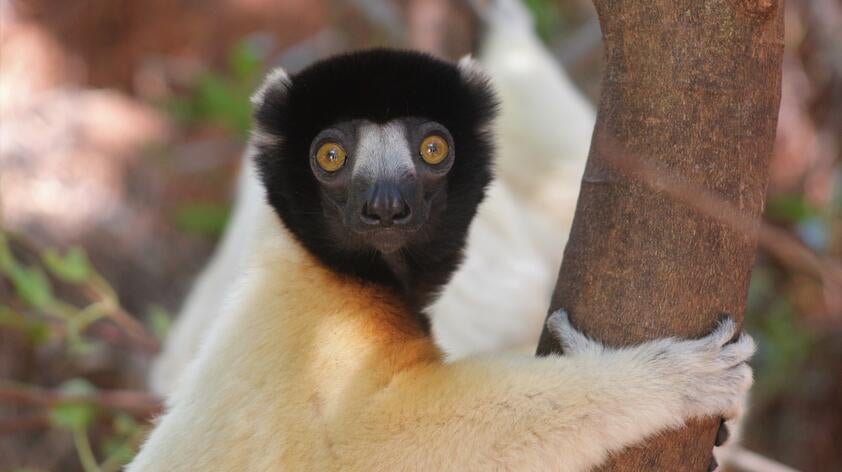
IUCN Red Listing: Lemurs on the brink
This week you may have read in the news that 98% of lemurs are threatened with extinction, making them the most threatened mammal group on earth. Perhaps you don’t know much about lemurs, and so this news came as a shock; in that case, you may be wondering how imminent is the threat? Could we witness the extinction of all lemurs during our lifetimes? To answer this quickly, yes, the threat to lemurs at this moment is so great that it is conceivable that some species may go extinct in our lifetimes.
But, do not be discouraged, there are hundreds of people dedicating their lives to lemur conservation to make sure this doesn’t happen.
Recently, a group of about 50 lemur researchers and conservationists comprising the Primate Specialist Group of the IUCN/SSC (International Union for Conservation of Nature / Species Survival Commission) met to review all available data and regional information to determine the specific threat categories within the IUCN’s Red List of Threatened Species to assign to every lemur species. These threat categories are Critically Endangered, Endangered, and Vulnerable; species that do not meet critical criteria are assigned as either Not Threatened or Data Deficient.
When you visit San Diego Zoo or the San Diego Zoo Safari Park, you may notice these terms used on signage in front of animal habitats. Each of these categories carries a lot of weight when discussing the probability of a species to thrive, or even simply survive, in the immediate future. Regarding the assessment, I was impressed with the breadth of international and local Malagasy people included in the process, and the sheer amount and types of data it takes to come to a decision. This reflects not only the thoroughness of the process, but also that of the field researchers and land managers working tirelessly every day to make sure we have up to date information.
As an active member of the lemur section of the IUCN/SSC Primate Specialist Group, I can tell you that decisions to assign lemurs to these categories are based on quantitative data collected by researchers, conservationists, and land managers, who all come to together to evaluate these and the trends that we observe in the field. More specifically, multiple metrics are considered when assessing species that evaluate population size, health, and geographic range, both in the immediate past and projections for how trends may continue in the immediate future. This means that surveys focused on lemur presence, population densities, and habitat quality are critical to our ability to evaluate the threat level facing each species.
For the 107 different lemur species, their unfortunate classification as the most threatened mammal group has been the result of sustained anthropogenic habitat loss over the past few centuries in Madagascar, the island nation where all lemurs are endemic. This deforestation has isolated the dwindling lemur populations, creating an enormous conservation problem for their future. To this point, nearly a third (31%) of lemurs assessed were listed as Critically Endangered.
Because so much data, and so many people are involved, the process of evaluating and assessing species takes time. Our initial assessments were conducted during a meeting in May 2018 and are only now being published, and so it is plausible that in the intervening years, the situation for some of these lemur species may have become worse. In fact, the current coronavirus pandemic has had a detrimental effect on conservation programs around the world.
Despite closing its borders since late March, cases of Covid-19 are increasing in Madagascar’s larger cities. Domestic travel has also been suspended, leading to precarious economic situations which may in turn have dire consequences for the country’s protected areas and threatened endemic species. As the local communities surrounding these parks often rely on tourism for their livelihood, they are now faced with a situation of needing to provide for their families and some may eventually begin turning to illegal timber harvesting and small-scale bushmeat hunting.
Not everything is so ominous though, and there is certainly hope for the future. Our team at San Diego Zoo Global has been working tirelessly in Madagascar to survey remote forest sites for lemur species, maintain and operate a field research camp which helps to safeguard an incredibly diverse valley of primary forest in the northeast, and train the next generation of local Malagasy conservationists. It is this commitment to conservation from our local partners that should instill hope for improving this otherwise seemingly dire situation.
Images: Crowned sifaka (Propithecus coronatus), a Critically Endangered lemur species from northwest Madagascar.













